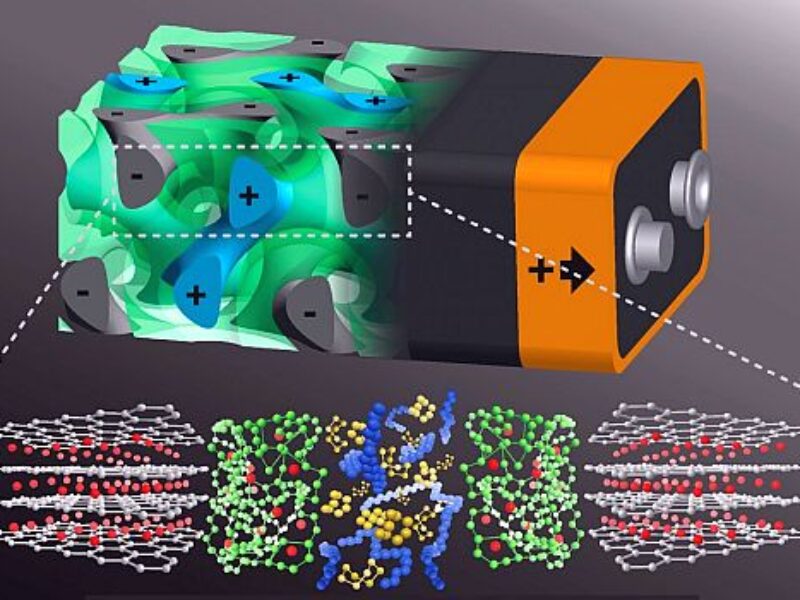
Self-assembling 3D battery would charge in seconds
Instead of having the batteries’ anode and cathode on either side of a nonconducting separator, a team at Cornell University in Ithaca, New York, intertwined the components in a self-assembling, 3D gyroidal structure, with thousands of nanoscale pores. These pores are filled with carbon and sulfur to form the battery cell.
“This is truly a revolutionary battery architecture,” said Ulrich Wiesner, professor of engineering at Cornell who led the team.
“This three-dimensional architecture basically eliminates all losses from dead volume in a device but, more importantly, shrinking the dimensions of these interpenetrated domains down to the nanoscale, as we did, gives you orders of magnitude higher power density. In other words, you can access the energy in much shorter times than what’s usually done with conventional battery architectures. By the time you put your cable into the socket, in seconds, perhaps even faster, the battery would be charged,” he said.
The architecture for this concept is based on block copolymer self-assembly, which the Wiesner group has employed for years in other devices, including a gyroidal solar cell and a gyroidal superconductor.
The gyroidal thin films of carbon – the battery’s anode, generated by block copolymer self-assembly – uses thousands of periodic pores around 40nm wide that are coated with a 10nm layer that is electronically insulating but ion-conducting using electropolymerization. This creates a pinhole-free separation layer which is essential to avoid the catastrophic failures that lead to fires in mobile devices such as cellphones and laptops.
The next step is the addition of the cathode material, in this case sulfur, to almost fill the pores. As sulfur can accept electrons but doesn’t conduct electricity, the final step is backfilling with an electronically conducting polymer called PEDOT (poly[3,4-ethylenedioxythiophene]).
While this architecture offers proof of concept it still has challenges says Wiesner. Volume changes during discharging and charging the battery gradually degrade the PEDOT charge collector, which doesn’t experience the volume expansion that sulfur does. “When the sulfur expands you have these little bits of polymer that get ripped apart, and then it doesn’t reconnect when it shrinks again. This means there are pieces of the 3D battery that you then cannot access,” he said.
The group is still perfecting the technique, but applied for patent protection on the proof-of-concept.
Related articles:
MICROWAVING RECYCLED PLASTIC BOOSTS LITHIUM SULFUR BATTERY
BREAKTHROUGH FOR LITHIUM SULFUR BATTERIES
MAJOR BOOST FOR LITHIUM SULFUR BATTERIES IN ELECTRIC TRUCKS
SILICON ANODE BOOST FOR LITHIUM SULFUR BATTERIES
 If you enjoyed this article, you will like the following ones: don't miss them by subscribing to :
eeNews on Google News
If you enjoyed this article, you will like the following ones: don't miss them by subscribing to :
eeNews on Google News




